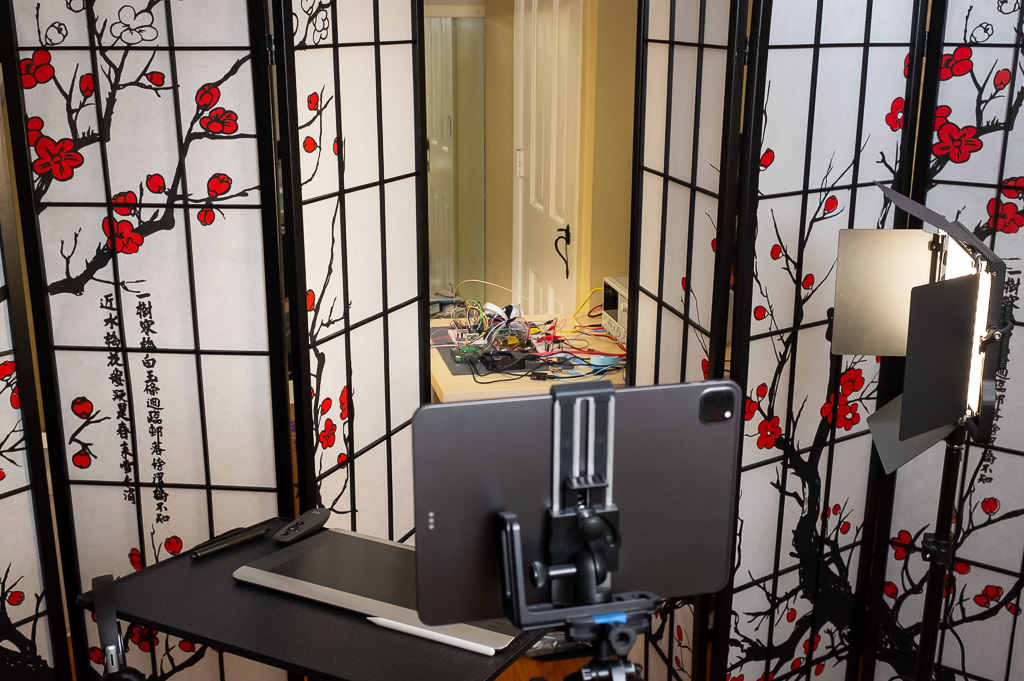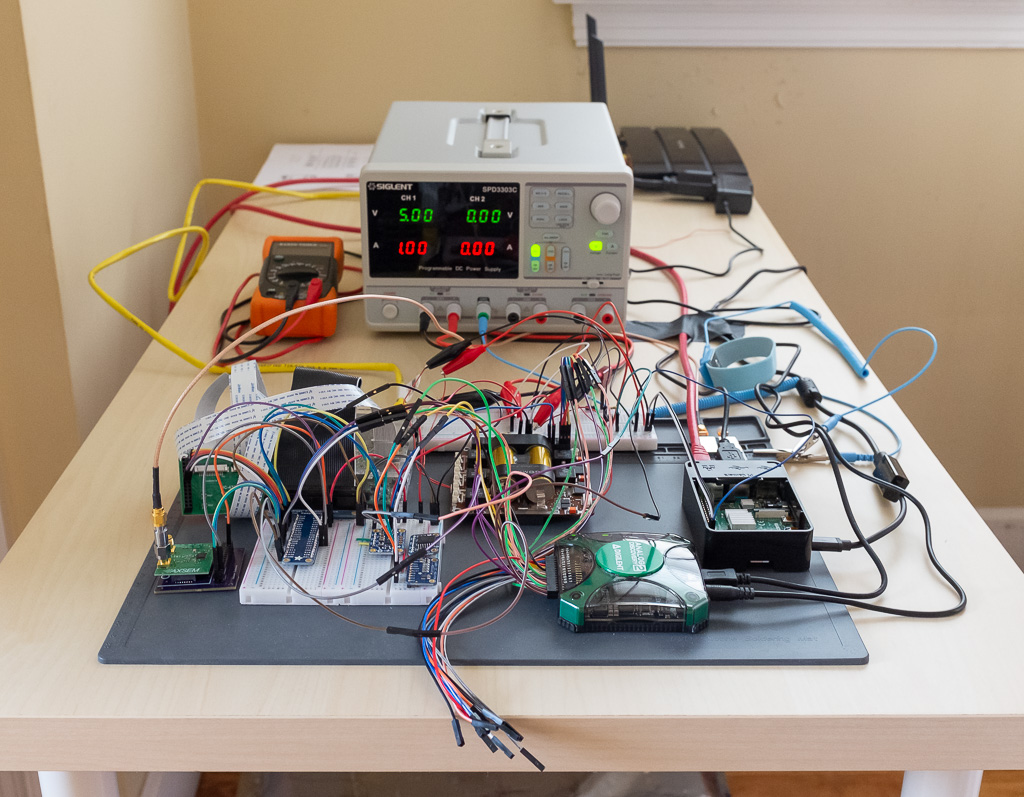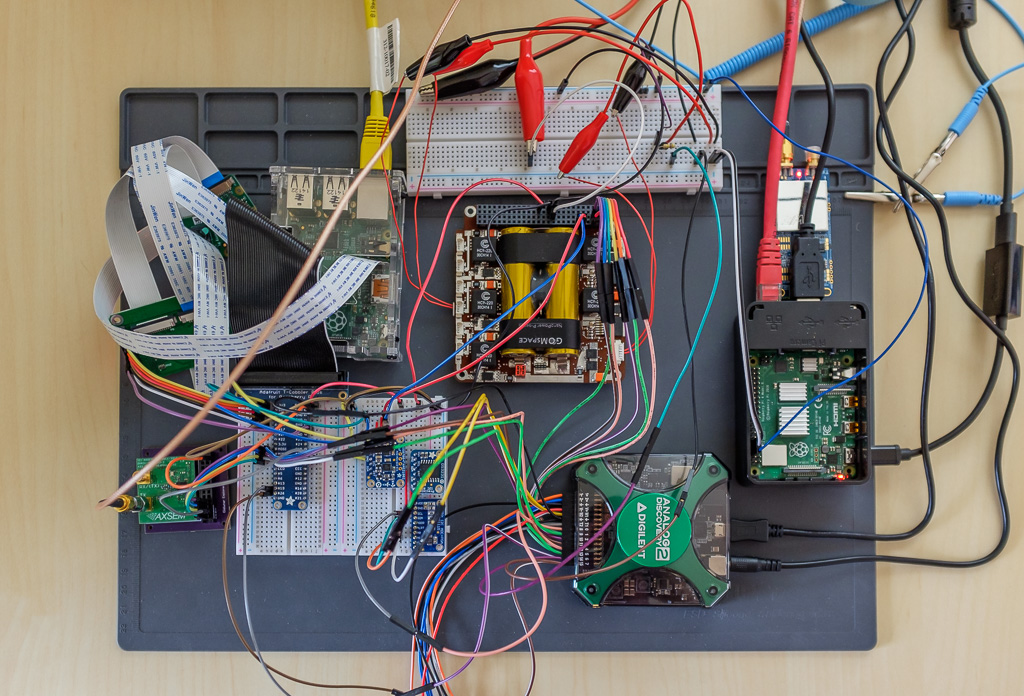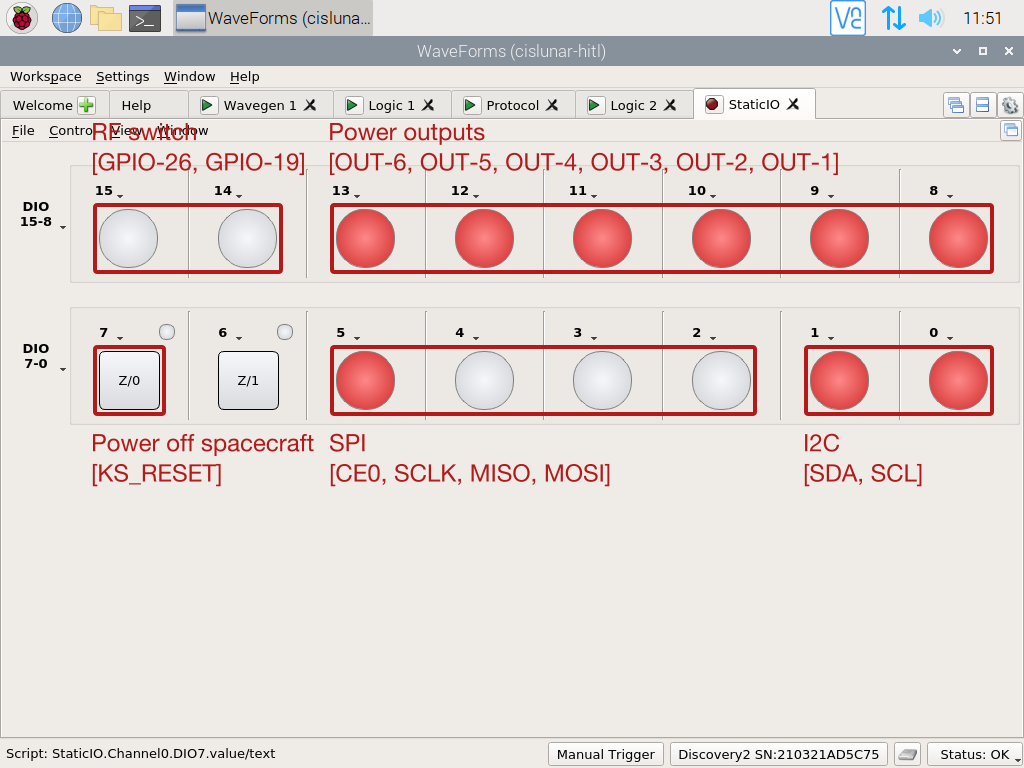Acknowledging the growing practice of using Zoom backdrops and privacy screens while on camera, CS Lecturer Curran Muhlberger ’14 notes that “many professors have these screens behind them as they lecture or hold office hours virtually. But behind those screens could be anything: baby toys, electric guitars, a home-brew apparatus, or in my case, a satellite.” So how did Muhlberger come to have a satellite in his home office?
In response to COVID-19 restrictions—most especially vacating Cornell’s on-campus labs—Muhlberger and students are beginning to test the practicality and efficacy of distributed labs. The three-week pause in instruction was just enough time for Muhlberger, drawing on his experience at SpaceX, to assemble a “hardware-in-the-loop testbed” that can be remotely controlled by students from their homes. Describing the situation, he says:
I’ve been advising some CS students in the Space Systems Design Studio, where they were hard at work building and testing a satellite to be launched next year. All physical construction had to stop, and while many assume that software development can be done remotely, software for embedded systems needs to be tested on real hardware: batteries need to be charged, voltages need to be applied, etc. To help the students out in this area, I moved some spare avionics from the lab to my home and set up a remote-controlled satellite, inspired by the kinds of automated facilities some of them will eventually see in industry. The hardware to do so was remarkably low-cost—tools used by educators and hobbyists today can mimic the functionality of specialty lab equipment from just a few years ago.
Now that classes have resumed, it’s time to power it up. A cautious advisor, Muhlberger notes that “while this testbed is up and running for me, the real test will be when the students try accessing it themselves.” Revealing his attunement to emergent complexities, he adds: “A project like this also requires thinking beyond just the technical capabilities—there are safety, security, and privacy concerns associated with providing remote access to hardware in one's home.” As part of his response to these challenges, Muhlberger notes that he’ll be “demanding a lot of discipline from the students as well as providing them protocols that demonstrate how to mitigate such issues.” Concluding with a positive outlook, Muhlberger says: “hopefully this exploration of distributed workspaces will serve as an additional educational opportunity for them that may have been overlooked if all work remained in the lab.”






